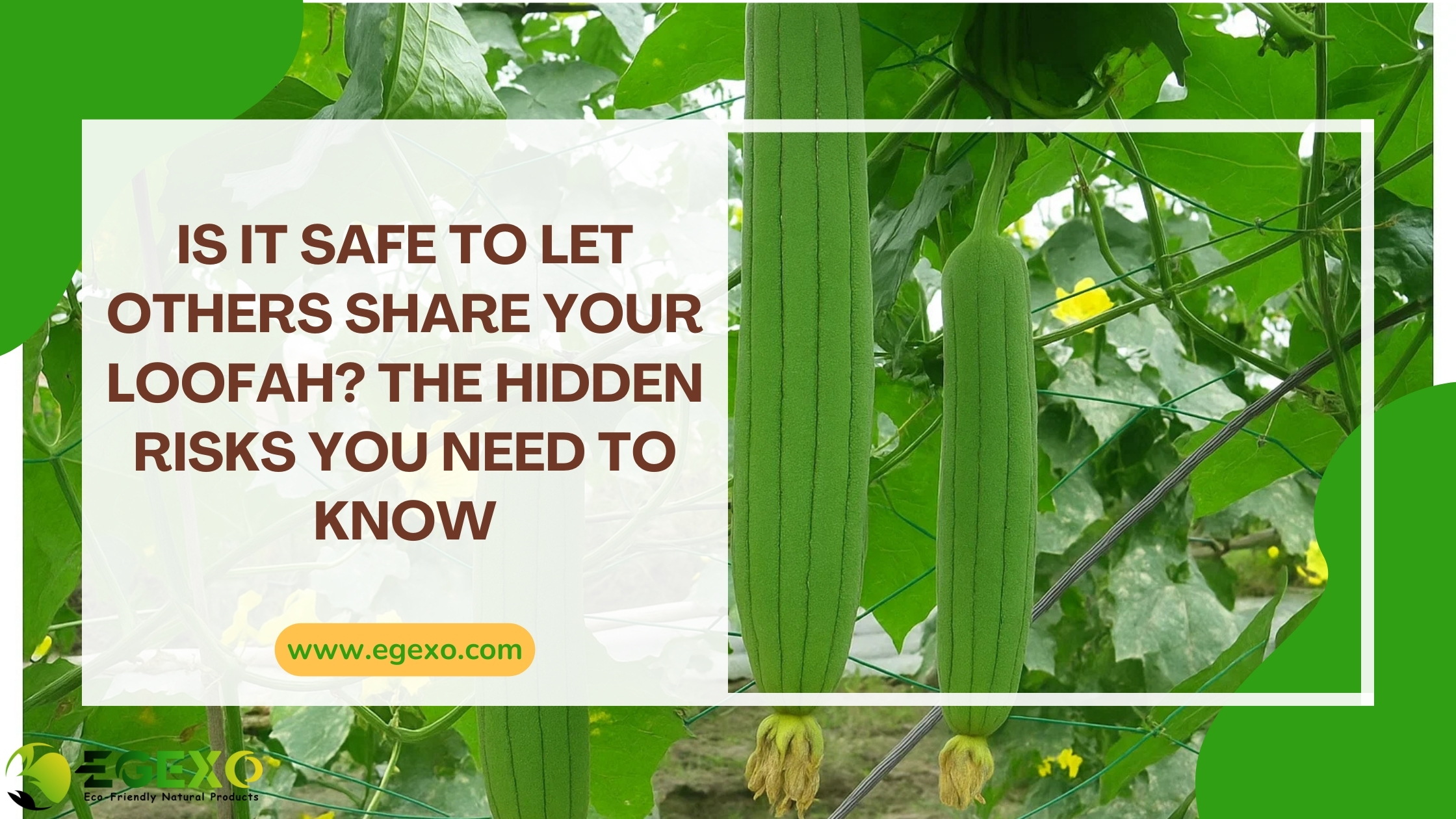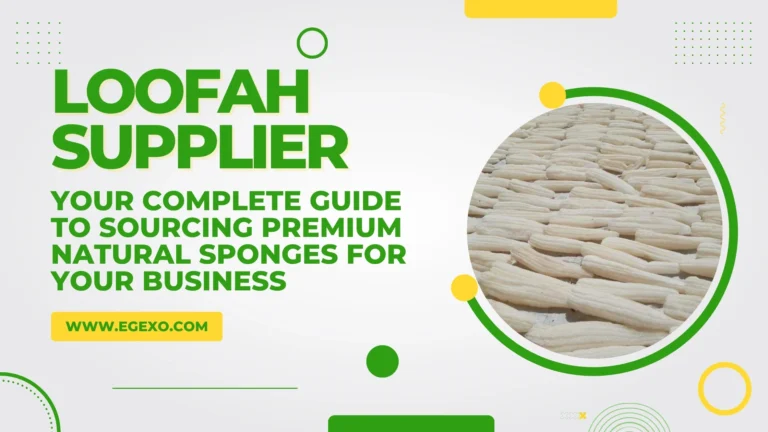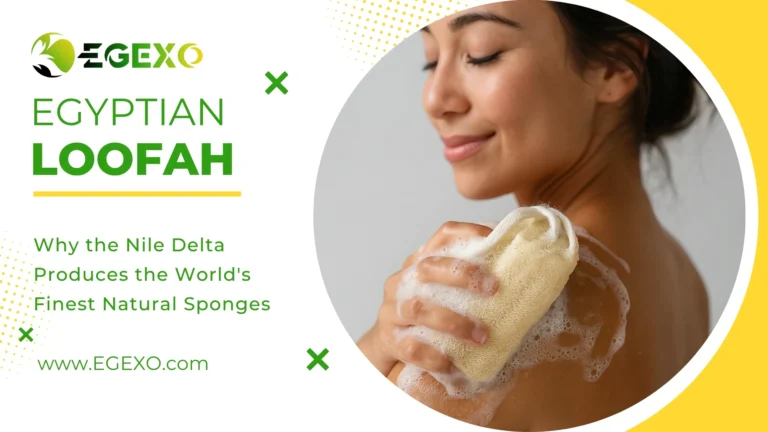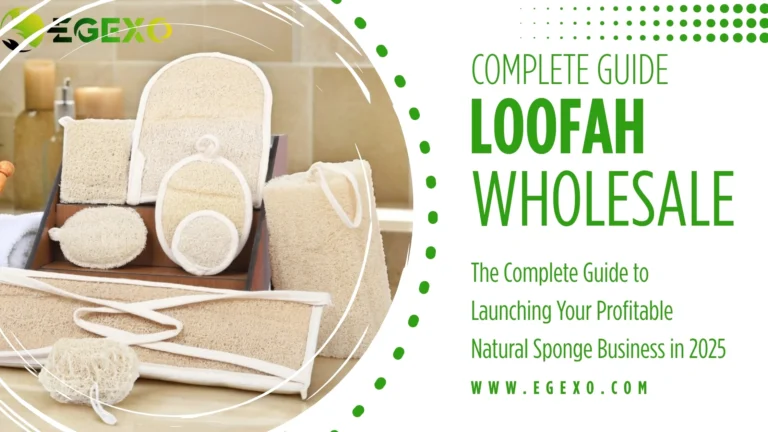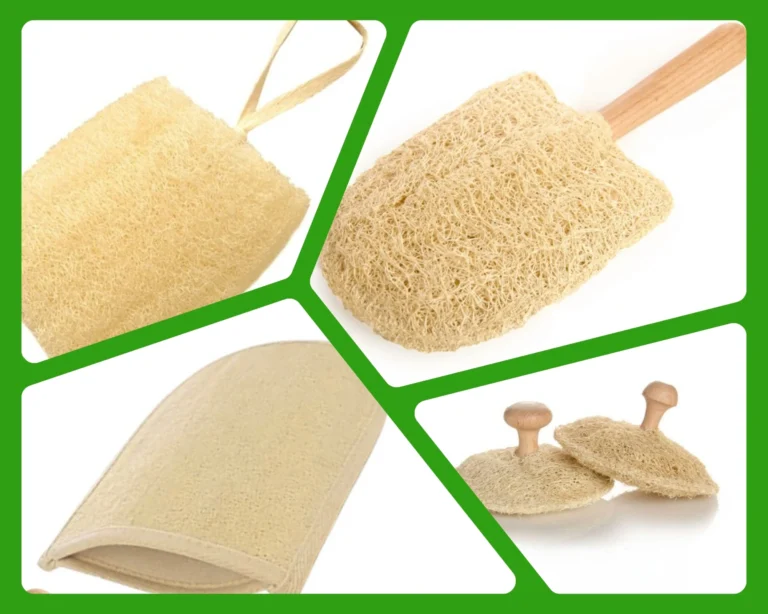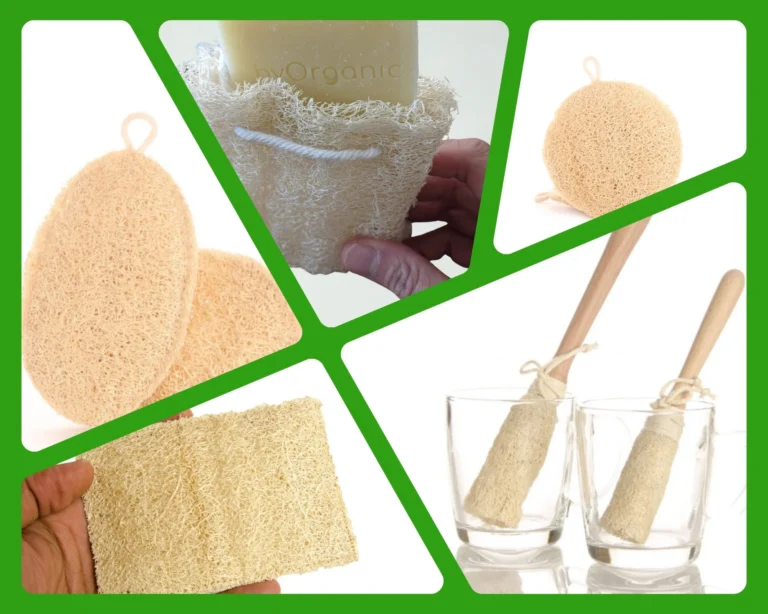Is It Safe to Let Others Share Your Loofah? The Hidden Risks You Need to Know
The simple answer? It’s not safe to let others share your loofah. But the reasons behind this go much deeper than you might expect, involving bacterial growth, skin health concerns, and hygiene practices that affect both personal and commercial use of natural sponges.
Picture this: you’re hosting a weekend getaway with friends, and someone forgot their shower essentials. They eye your beautiful Egyptian loofah hanging in the bathroom and ask, “Mind if I borrow this?” Before you say yes, there’s something crucial you need to understand about loofah sharing that could impact everyone’s health and hygiene.
Why Sharing Your Loofah Creates Health Risks
The Hidden World Living in Your Loofah Sponge
Natural loofahs, including premium Egyptian loofah varieties, are incredibly effective exfoliating sponges precisely because of their fibrous, porous structure. However, this same quality that makes them perfect for removing dead skin cells also creates an ideal environment for bacteria, fungi, and other microorganisms to thrive.
When you use a loofah sponge, it collects:
- Dead skin cells
- Body oils and soap residue
- Bacteria from your skin
- Environmental contaminants
- Moisture that feeds microbial growth
Research published in the Journal of Clinical Microbiology found that used bath sponges can harbor significant bacterial populations, including potentially harmful strains like Pseudomonas aeruginosa and various staphylococcal species.
What Happens When Multiple People Use the Same Exfoliating Sponge?
Sharing a loofah essentially means sharing all the bacteria, dead skin, and potential pathogens that have accumulated from previous users. This cross-contamination can lead to:
Skin Infections: Bacterial and fungal infections can easily spread through shared bath accessories, particularly affecting individuals with compromised skin barriers or existing skin conditions.
Allergic Reactions: Different people have varying sensitivities to skincare products and natural materials. Sharing can trigger unexpected allergic responses.
Compromised Hygiene: The fundamental purpose of bathing – removing dirt, bacteria, and dead skin – becomes counterproductive when using contaminated tools.
The Science Behind Loofah Contamination
How Bacteria Multiply in Natural Sponges
Dr. Maria Rodriguez, a dermatologist specializing in skin health, explains: “The warm, moist environment of a bathroom combined with the organic matter trapped in natural loofahs creates perfect conditions for rapid bacterial multiplication. Within hours of use, bacterial populations can increase exponentially.”
Studies have shown that even with proper rinsing, loofahs retain significant bacterial loads. The fibrous structure of luffa sponges, while excellent for exfoliation, creates countless microscopic spaces where contaminants can hide and multiply.
The 24-Hour Rule: Understanding Bacterial Growth Patterns
Microbiological research indicates that bacterial populations in used loofahs can double every 20-30 minutes under optimal conditions. This means that a loofah used in the morning shower can harbor millions of bacteria by evening – far more than what’s safe for sharing with others.
Personal vs. Commercial Loofah Use: Different Safety Standards
Individual Loofah Ownership: The Gold Standard
For personal use, maintaining individual ownership of bath and body loofah products is non-negotiable. Each person should have their own designated natural loofah, properly maintained and regularly replaced.
Best practices for personal loofah care include:
- Thorough rinsing after each use
- Proper drying in well-ventilated areas
- Regular replacement every 3-4 weeks
- Occasional disinfection with appropriate solutions
Commercial and Spa Applications: Special Considerations
Businesses in the spa, wellness, and hospitality industries face unique challenges regarding loofah use. Professional establishments typically employ single-use policies or industrial-grade sanitization procedures that aren’t practical for home use.
For retailers, distributors, and suppliers working with loofah pet and spa grooming products, understanding these safety requirements is crucial for product positioning and customer education.
Regional Perspectives: Global Loofah Safety Standards
North American Approaches (USA and Canada)
Health authorities in the United States and Canada generally recommend against sharing personal hygiene tools, including natural sponges. The CDC’s guidelines on personal hygiene emphasize individual ownership of bath accessories as a key infection prevention strategy.
European Union Standards
EU health regulations, particularly those affecting spa and wellness industries, mandate strict hygiene protocols for shared bathing facilities. These standards influence how raw loofah scrubbers are processed and distributed throughout European markets.
Australian and New Zealand Practices
In Australia and New Zealand, where natural skincare has deep cultural roots, health education programs actively promote individual loofah ownership as part of comprehensive hygiene practices.
Brazilian and South American Perspectives
Brazilian bathing culture, known for its emphasis on cleanliness and skincare, traditionally supports individual loofah use. This cultural practice aligns well with modern hygiene science.
What Makes Egyptian Loofah Different in Terms of Safety?
Superior Quality and Structure
High-quality Egyptian loofah possesses unique characteristics that affect safety considerations. The dense, uniform fiber structure of premium Egyptian varieties tends to be more resistant to bacterial penetration than lower-grade alternatives, though sharing risks remain significant regardless of quality.
Processing and Treatment Standards
Properly processed Egyptian loofahs undergo specific treatment procedures that reduce initial bacterial loads. However, these treatments don’t eliminate the risks associated with sharing during actual use.
Safe Alternatives to Sharing Your Loofah
The Guest Loofah Solution
Smart hosts keep a supply of individual, unused natural loofahs for guests. This approach maintains hygiene standards while ensuring everyone can enjoy the benefits of proper exfoliation. Consider stocking various sizes from kitchen and household loofah products for different needs.
Disposable Options for Temporary Sharing
For situations where sharing seems unavoidable, consider single-use exfoliating alternatives. While not as environmentally friendly as reusable natural sponges, they eliminate cross-contamination risks.
Proper Sanitization Protocols
If sharing absolutely cannot be avoided, implement rigorous sanitization procedures:
- Thorough rinse with hot water
- Soak in antibacterial solution
- Complete air drying between uses
- UV sanitization if available
Important Note: Even with these measures, sharing carries residual risks that individual ownership eliminates entirely.
Business Implications: For Suppliers and Retailers
Educating Your Customer Base
Whether you’re involved in private labeling services or direct retail, customer education about loofah safety becomes a competitive advantage. Informed customers make better purchasing decisions and demonstrate higher satisfaction with their natural sponge products.
Product Positioning and Marketing
Understanding safety considerations helps position loofah products appropriately. Emphasizing individual ownership and proper hygiene practices in marketing materials builds trust and demonstrates industry expertise.
Quality Standards and Safety
Maintaining high quality standards throughout the farm to export process ensures that customers receive products that support safe usage practices.
Special Considerations for Pet and Spa Applications
Loofah Pet Grooming Safety
When using natural loofahs for pet grooming, the same sharing principles apply. Each pet should have designated grooming tools to prevent cross-contamination of bacteria, parasites, or skin conditions between animals.
Professional Spa Standards
Spa professionals working with natural exfoliating products must maintain the highest hygiene standards. This typically means single-use policies or professional-grade sanitization systems that exceed home capabilities.
The Environmental Perspective: Balancing Safety and Sustainability
Individual Ownership vs. Environmental Impact
While individual loofah ownership increases overall product consumption, it significantly reduces health risks. The key lies in choosing high-quality, sustainably sourced natural sponges that last longer and biodegrade responsibly.
Sustainable Practices for Loofah Users
- Choose organically grown, sustainably harvested loofahs
- Maximize product lifespan through proper care
- Compost used loofahs responsibly
- Support suppliers with transparent environmental practices
Red Flags: When Loofah Sharing Becomes Dangerous
High-Risk Scenarios
Certain situations make loofah sharing particularly dangerous:
- Users with active skin infections
- Individuals with compromised immune systems
- Presence of open wounds or cuts
- Recent antibiotic treatment affecting skin microbiome
- History of recurring skin conditions
Warning Signs of Contaminated Loofahs
Watch for these indicators that a loofah may be harboring dangerous levels of contamination:
- Persistent unpleasant odors
- Visible discoloration or dark spots
- Slimy texture even when dry
- Unusual brittleness or deterioration
Frequently Asked Questions About Loofah Sharing Safety
Can I safely share a loofah with my spouse or partner?
Even between intimate partners, sharing loofahs carries risks. Each person’s skin microbiome is unique, and cross-contamination can lead to infections or skin irritation. It’s best for each person to maintain their own natural sponge.
How long do bacteria survive on a used loofah?
Bacteria can survive and multiply on moist loofahs for days or even weeks under favorable conditions. Proper drying reduces survival time, but doesn’t eliminate all microorganisms.
Is it safer to share a new loofah compared to a used one?
While a new loofah starts with lower bacterial loads, it becomes contaminated immediately upon first use. The safety risk begins with the first person to use it, making sharing inadvisable regardless of the sponge’s age.
Can hot water rinses make sharing safer?
Hot water rinses help reduce bacterial populations but cannot eliminate all contaminants. The porous structure of natural loofahs makes complete sterilization through simple rinsing impossible.
What about using antibacterial soap with shared loofahs?
Antibacterial soaps may reduce some bacterial populations but don’t address fungi, viruses, or bacteria resistant to common antimicrobial agents. They also don’t prevent the initial contamination from skin-to-sponge contact.
Are synthetic sponges safer for sharing than natural loofahs?
Synthetic sponges may harbor fewer bacteria due to their non-organic composition, but sharing any personal hygiene tool carries contamination risks. Individual ownership remains the safest approach regardless of sponge material.
How often should I replace my personal loofah?
Replace natural loofahs every 3-4 weeks with regular use, or sooner if you notice odors, discoloration, or deterioration. More frequent replacement may be necessary in humid climates or with daily use.
Can UV light sanitize loofahs for safe sharing?
While UV light can reduce bacterial populations, it may not penetrate deeply into the loofah’s fibrous structure. UV sanitization is better suited for surface disinfection rather than comprehensive sponge sterilization.
Conclusion: Making Informed Decisions About Loofah Safety
The question “Is it safe to let others share your loofah?” has a clear answer rooted in scientific evidence and practical hygiene considerations. While the immediate risks may seem minimal, the potential for bacterial transmission, skin infections, and hygiene compromise make individual loofah ownership the wisest choice.
For businesses in the natural sponge industry, understanding these safety considerations provides opportunities for customer education, proper product positioning, and building trust through transparency. Whether you’re sourcing Egyptian loofah for retail or developing custom product designs, prioritizing customer safety enhances your reputation and supports long-term business success.
Remember, investing in individual natural sponges for each household member isn’t just about hygiene – it’s about respecting the unique needs of each person’s skin and supporting overall health and wellness. When it comes to loofah sharing, the safest choice is simply not to share at all.

